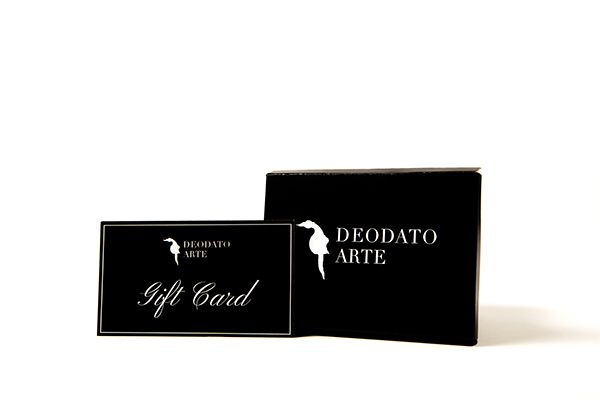
On August 6, 1928, the most irreverent, innovative and brilliant contemporary artist of the contemporary art scene, Andy Warhol, was born in Pittsburgh.
A predominant figure of Pop Art and creator of the Factory, a place where young New York artists could find a collective space to make artworks, Andy Warhol forever changed the concept of Contemporary Artand revolutionized the figure of the artist. From painter to screenwriter and filmmaker, Andy Warhol has always stood out, and his fame over the years has grown so much that he has become one of the world's most highly valued artists.
Andy Warhol was not only a great artist, but he was an important mentor to many artists who are also among the world's valued artists today, such as Jean-Michel Basquiat, Francesco Clemente, Kenny Scharf, and Keith Haring.
5 Iconic Artworks by the King of Pop Art
We celebrate the most irreverent artist of the New York scene of the 1960s through five iconic artworks that marked Andy Warhol's artistic production. Still striking today is the way Andy Warhol decided to document the changing values in contemporary society. Here are the five works by the king of Pop Art:
Campbell's Soup Cans
July 9, 1962, Andy Warhol exhibited for the first time 32 canvases, each measuring 51x41 cm, depicting all varieties of Campbell's Soup cans. For the first time, Warhol used the screen printing system, a technique that would make him popular in later years, and helped make Pop Art among the major art movements in the United States of America.
An immediate image known to the masses, Campbell's Soup Cans are a perfect symbol of mass culture and American society, which at the time saw cans of soup on supermarket shelves and on its tables on a daily basis. Warhol himself says he lunched with Campbell's Soup Cans for over twenty years.
Warhol wanted to make an everyday consumer object, such as Campbell's Soup Cans, a work of art thus elevating the object to a true work of art worthy of entering the world's most important galleries.
"... The problem with classicists is that when they look at a tree they see nothing else and they draw a tree..." - Andy Warhol
Marilyn Monroe
Speaking of the most important artworks of Andy Warhol's artistic production, one cannot but mention Marilyn Monroe. One of the artist's most emblematic and iconic subjects that still sets new records in the contemporary art market. Read more about the Marilyn by Warhol establish a new record.
Warhol first decided to depict Marilyn Monroe's face in 1962, the year when the diva passed away, and several series dedicated to the actress followed from that point on.
"In August '62 I started making silkscreens..... It was all so simple-fast and quirky. I was excited about it. My first experiments with silkscreens were heads of Troy Donahue and Warren Beatty, and then when Marilyn Monroe died that month, I got the idea to make silkscreens of her beautiful face-the first Marilyns." - Andy Warhol

Andy Warhol not only contributed significantly to the development of Pop Art with his silkscreens but also established Marilyn Monroe as an icon. The image made famous by the artist was based on the Hollywood star's promotional photo taken for the 1953 film Niagara.
Flowers

One of Andy Warhol's most famous and beloved works is surely Flowers, a silkscreen print made in 1964 that turned a simple hibiscus flower into a work of art.
Starting with a black-and-white photograph by photographer Patricia Cauldfield, Warhol reworked the subject and made more than 900 copies. Warhol began to edit the image and make it graphic, and just as he did for the portrait of Marilyn Monroe, the king of Pop Art takes away the image's uniqueness. Andy Warhol thus equalizes completely different objects, characters and subjects; even nature, in this case, is reduced to a mass consumer good.
Mao Tse-Tung
Another key artwork by Andy Warhol is the portrait of Mao Tse-Tung. Following the meeting between Richard Nixon and Mao Tse-Tung in 1972, Andy Warhol decided to pay tribute to the Chinese leader by reproducing the portrait published in the famous Little Red Book, which contains all the most famous quotes from the Chairman of the Communist Party of China. The portrait shows China's leader after the Cultural Revolution and is meant to unite Chinese and capitalist culture.
The artwork, however, was not well received in China, where to this day the work is seen as unsuitable for Chinese culture so much so that it was excluded from the Andy Warhol exhibition held in Beijing in 2013 and titled Andy Warhol 15 Minutes Eternal.

Vesuvius

As the last work to relive the milestones of the King of Pop Art, we recall Vesuvius. Made in the 1980s, the artwork depicts Vesuvius during an eruption. Vesuvius and the surrounding landscape then become an expression of the destructive power of nature. Bright colors characterize Vesuvius making it full of energy during an eruption with all its strength and beauty.
Andy Warhol will produce 18 canvases, 17 of which will be exhibited at the Capodimonte Museum in Naples.
"I love Naples because it reminds me of New York, especially the many transvestites and the garbage in the streets. Like New York, it's a city falling apart, and yet the people are as happy as the people in New York." - Andy Warhol











 Register
Register Wishlist
Wishlist Contact Us
Contact Us

